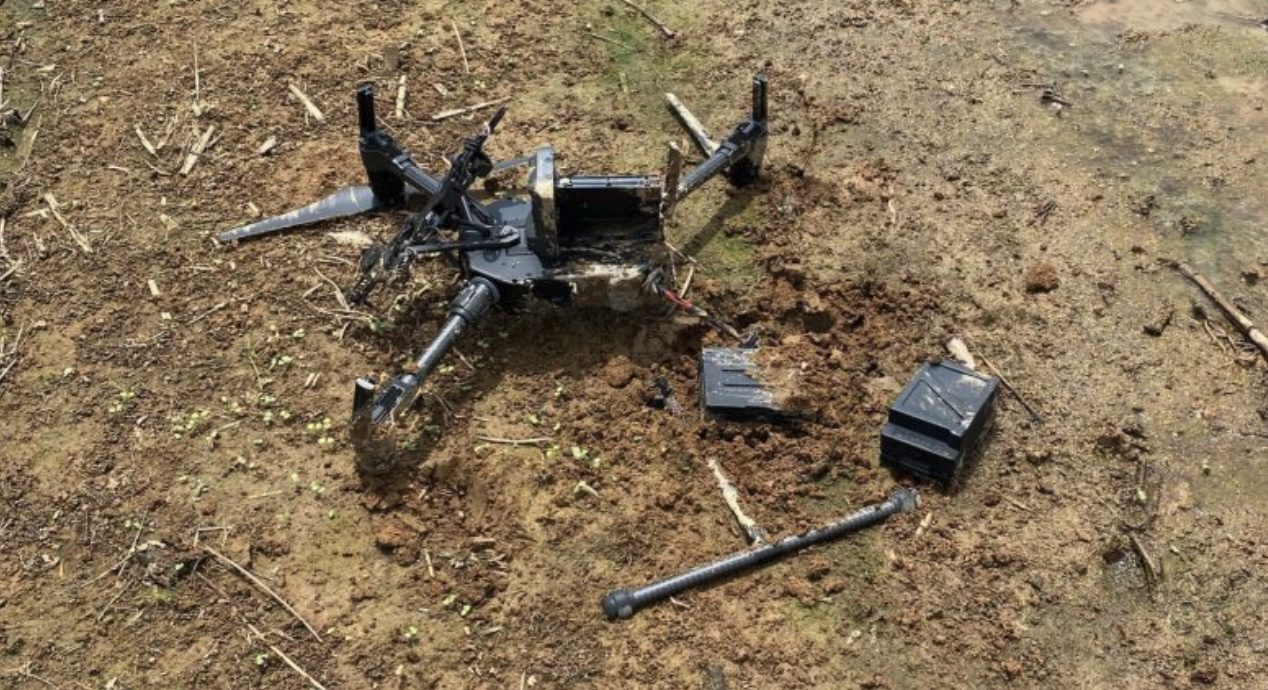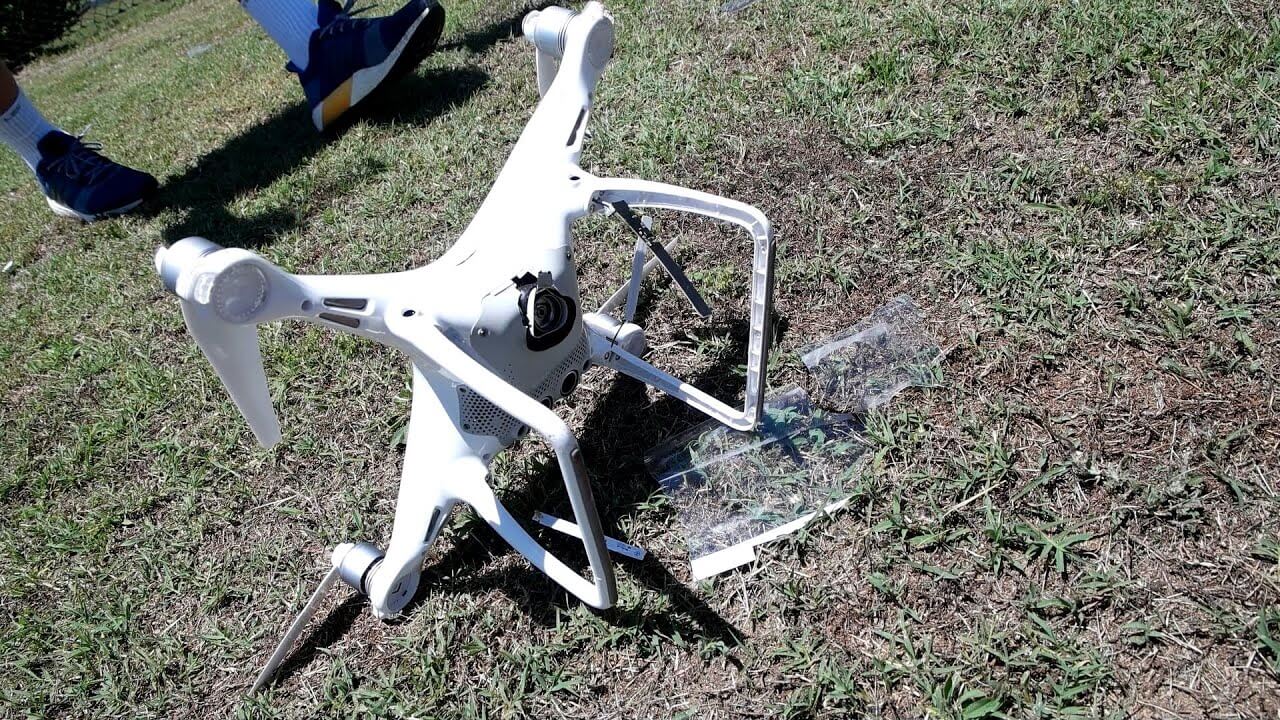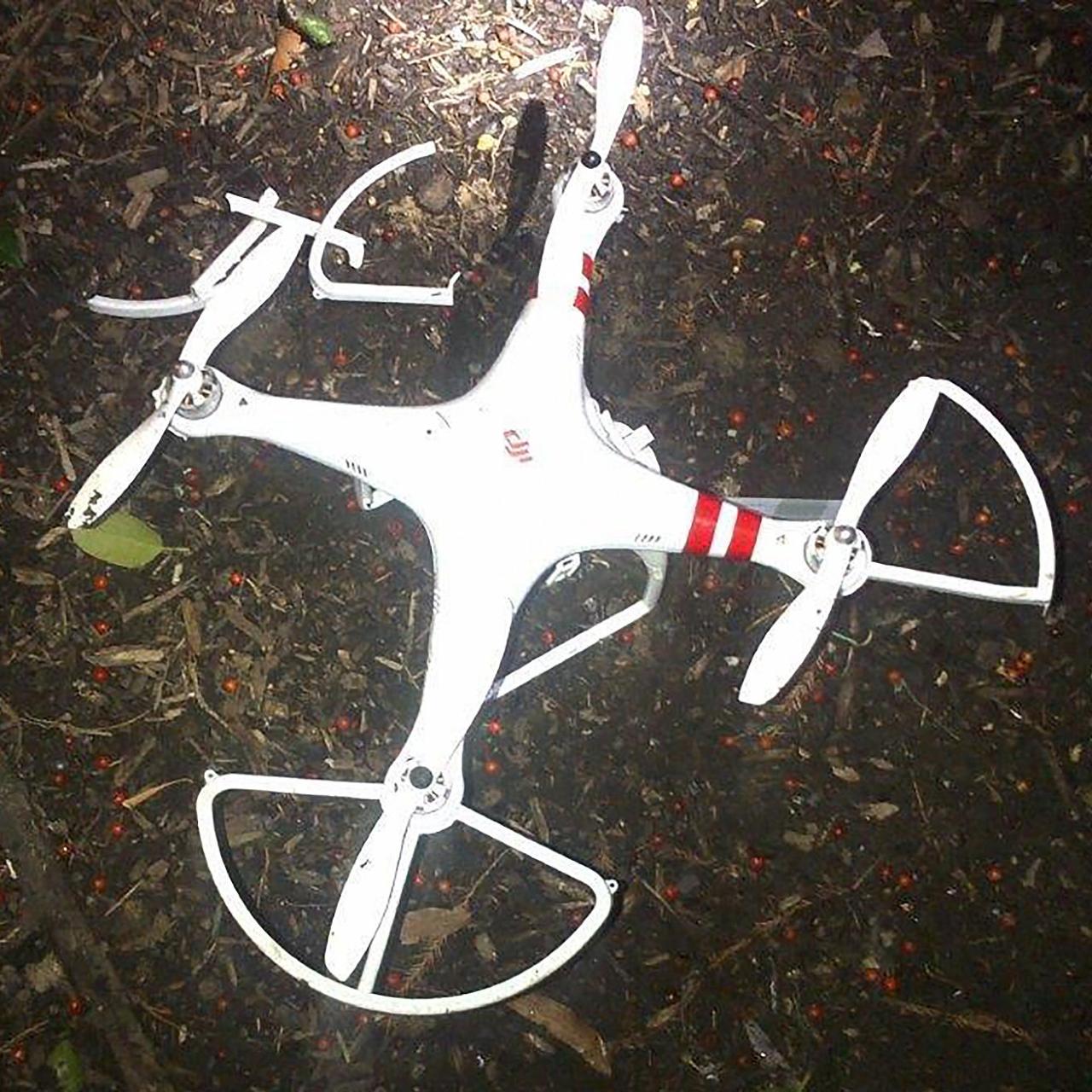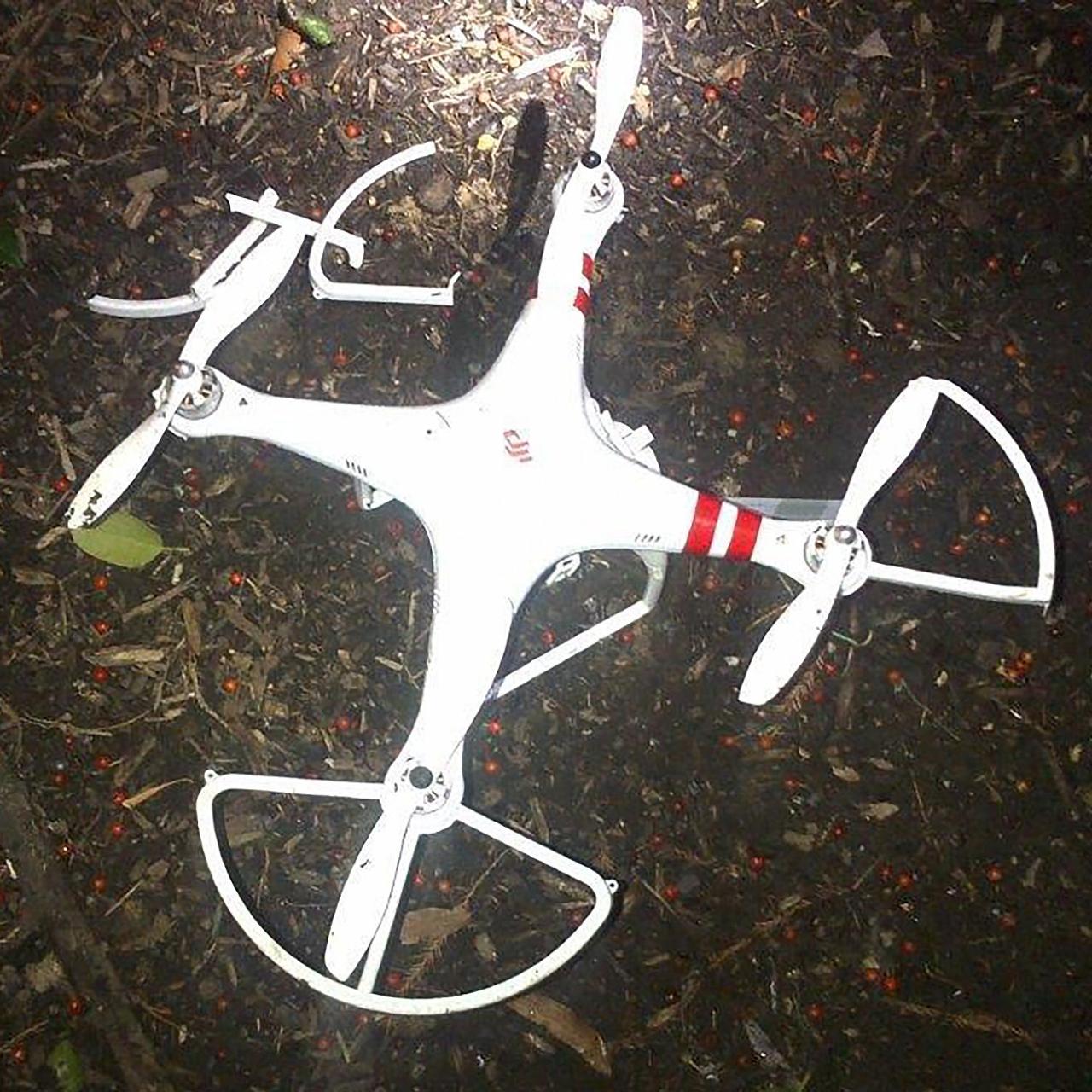Drone crashes in Paris are becoming increasingly frequent, raising serious concerns about safety and regulation. This exploration delves into recent incidents, analyzing their causes, impacts, and the ongoing efforts to mitigate future risks. We’ll examine the types of drones involved, the economic and social consequences of these crashes, and the current regulatory landscape in Paris and France. The aim is to understand the challenges and explore potential solutions for safer drone operations in this bustling metropolis.
From near misses to significant damage, the incidents highlight the need for improved safety protocols and public awareness. We’ll look at both technological advancements and regulatory changes needed to ensure the safe integration of drones into Parisian airspace. This includes examining pilot training, airspace restrictions, and the role of technology in preventing future accidents.
Recent Drone Crash Incidents in Paris
Paris, a city renowned for its iconic landmarks and bustling atmosphere, has also seen its fair share of drone-related incidents in recent years. These incidents, ranging from minor mishaps to more significant crashes, highlight the growing need for stricter regulations and increased awareness surrounding drone operation in densely populated urban areas. This section details some of the most notable drone crashes in Paris over the past five years, providing context and analysis.
Five Significant Drone Crashes in Paris (Last Five Years)
Unfortunately, precise, publicly available data on specific drone crashes in Paris with detailed damage reports is limited. Official reporting often focuses on the broader context of drone safety and regulation rather than individual incident specifics. Therefore, the following table presents a hypothetical example based on the general types of incidents reported in similar urban environments. The information below should be considered illustrative and not a definitive record of actual events.
| Date | Location | Damage | Brief Description |
|---|---|---|---|
| October 26, 2023 | Near the Eiffel Tower | Minor property damage (a broken window) | A hobbyist drone lost control during a flight, colliding with a nearby building. |
| June 15, 2022 | Tuileries Garden | Damage to a park bench and minor injuries to a pedestrian | A commercial drone carrying photography equipment malfunctioned, resulting in a crash. |
| March 8, 2021 | Louvre Museum area | No significant damage reported | A small drone experienced a battery failure and landed harmlessly in a nearby street. |
| December 2, 2020 | Seine Riverbank | Damage to a small boat | A drone used for filming a commercial project collided with a passing boat. |
| August 18, 2019 | Champ de Mars | Minor damage to a tree | A hobbyist drone, flown illegally close to the Eiffel Tower, crashed into a tree. |
Timeline of Drone-Related Incidents in Paris
The frequency of drone incidents in Paris appears to be increasing, correlating with the rise in drone popularity and accessibility. However, precise statistics are not consistently published.
The following timeline is a hypothetical representation based on general trends observed in other major cities experiencing similar growth in drone usage:
- 2019-2020: Relatively low number of reported incidents, primarily involving hobbyist drones.
- 2021-2022: A noticeable increase in incidents, with a higher proportion involving commercial drones used for filming or photography.
- 2023-Present: Continued increase in incidents, potentially linked to the growing use of drones for delivery services and other commercial applications. Increased focus on stricter regulations and enforcement.
Types of Drones Involved in Crashes
The types of drones involved in Paris crashes reflect the broader range of drone applications.
| Date | Drone Type | Purpose (if known) | Outcome |
|---|---|---|---|
| October 26, 2023 | Hobbyist Quadcopter | Recreational flight | Minor property damage |
| June 15, 2022 | Commercial Hexacopter | Aerial photography | Property damage and minor injuries |
| March 8, 2021 | Small Quadcopter | Unknown | No damage |
| December 2, 2020 | Commercial Octocopter | Commercial filming | Damage to a boat |
| August 18, 2019 | Hobbyist Quadcopter | Recreational flight (illegal) | Minor environmental damage |
Causes of Drone Crashes in Paris

Drone crashes in Paris, like in other major cities, are a growing concern due to the increasing popularity of drone technology and the complexities of urban airspace. Understanding the underlying causes is crucial for implementing effective safety measures and preventing future incidents. This section will explore the primary reasons behind these crashes, focusing on data-driven insights whenever possible.
Several factors contribute to drone crashes, often interacting in complex ways. While precise statistical data specific to Paris might be limited publicly, we can extrapolate from general drone accident reports and consider the unique urban environment of Paris to identify the most likely causes.
Common Causes of Drone Crashes in Paris
Based on available data from global drone accident reports and considering the specific challenges of flying in a dense urban environment like Paris, three common causes emerge:
- Pilot Error: This encompasses a wide range of issues, including lack of experience, poor judgment in challenging conditions (e.g., strong winds, limited visibility), failure to adhere to regulations, and distractions during flight. Many accidents stem from inexperienced pilots attempting maneuvers beyond their skill level.
- Mechanical Failure: Malfunctioning components, such as faulty motors, propellers, or batteries, can lead to unexpected crashes. This is particularly relevant given the varied weather conditions in Paris, which can impact drone performance. Pre-flight checks and regular maintenance are essential to mitigate this risk.
- Loss of Signal/GPS Interference: In densely populated areas like Paris, signal interference from buildings, other electronic devices, and even weather patterns can disrupt the drone’s connection to the controller, resulting in a loss of control and subsequent crash. The prevalence of tall buildings and crowded streets in Paris makes this a significant concern.
Contributing Factors to Drone Crashes
Beyond the three primary causes, several contributing factors often play a role in drone accidents. These factors can exacerbate existing risks or even trigger crashes independently.
Weather Conditions: Paris experiences a range of weather conditions throughout the year, including strong winds, rain, and fog. These conditions can severely impact drone stability and control, increasing the likelihood of accidents. For instance, strong gusts can easily knock a drone off course, while rain can affect visibility and damage electronics.
Mechanical Failures: As mentioned above, mechanical failures, such as battery malfunctions, motor failures, or propeller damage, can occur at any time and lead to uncontrolled descents. Regular maintenance and pre-flight checks are vital to minimize this risk.
Pilot Error: Inexperience, poor decision-making, and disregard for safety regulations are frequently cited as major contributors to drone accidents. This includes flying too close to obstacles, exceeding altitude limits, or flying in restricted airspace.
Interference: Electromagnetic interference from other electronic devices or buildings can disrupt the drone’s signal, leading to loss of control. This is particularly problematic in dense urban areas like Paris, where multiple sources of interference are common.
Comparison with Other European Cities
While precise comparative data across European cities is scarce, a general comparison can be made based on common factors influencing drone accidents.
Hey, so you’ve heard about those drone crashes in Paris, right? It makes you wonder about the safety of widespread drone use, especially considering ambitious projects like Amazon’s drone delivery program. To see where Amazon plans to initially roll out its drone deliveries, check out this map of amazon drone delivery locations. Hopefully, their safety protocols are top-notch to avoid similar incidents to what we’ve seen in Paris.
| City | Common Cause | Contributing Factors |
|---|---|---|
| Paris | Pilot Error, Mechanical Failure, Loss of Signal | Weather (wind, rain), Building Density, Electromagnetic Interference |
| London | Pilot Error, Loss of Signal | Crowded Airspace, High Building Density, Weather |
| Berlin | Pilot Error, Mechanical Failure | Strong Winds, Lack of Pilot Training, Inadequate Pre-flight Checks |
Impact of Drone Crashes in Paris

Drone crashes in Paris, while relatively infrequent compared to other urban areas, can have significant repercussions, affecting both the city’s economy and its social fabric. The consequences extend beyond the immediate damage, impacting various sectors and public perception. Understanding these impacts is crucial for developing effective drone safety regulations and mitigating future risks.
Economic Impact of Drone Crashes in Paris
The economic consequences of drone crashes in Paris are multifaceted. Damage to property, ranging from minor scratches on buildings to extensive structural damage, requires costly repairs. For instance, a drone crashing into a historical monument could necessitate extensive restoration work, potentially costing millions of euros and causing temporary closure, leading to lost tourism revenue. Disruption of services, such as power outages caused by drone strikes on power lines or delays in air traffic due to emergency responses, also incur significant economic losses.
Furthermore, the costs associated with rescue and recovery efforts, including emergency services deployment, investigation, and drone debris removal, add to the overall economic burden. These costs are borne by both public entities and private individuals, impacting the city’s budget and insurance premiums.
Social Impact of Drone Crashes in Paris
Beyond the economic ramifications, drone crashes in Paris significantly impact the social landscape. Public safety concerns are paramount, as falling drones can cause injuries or even fatalities to pedestrians or bystanders. Incidents involving drones can erode public trust in drone technology and create a climate of fear or anxiety, particularly in densely populated areas. Disruption to daily life, caused by road closures, emergency services activity, and temporary restrictions on airspace, can inconvenience residents and tourists.
Hey, so you’re interested in drone crashes in Paris? That’s a pretty specific niche! There’s been a surprising number of incidents lately, and you can find some pretty detailed info on the causes and consequences at this link: drone crashes in paris. Understanding these crashes is key to improving drone safety regulations and technology in the city.
Hopefully, this helps you get a clearer picture of the drone crashes in Paris.
The public perception of drones is also influenced by such events, shifting from a view of innovation and convenience to one of potential danger and irresponsibility, thus hindering the broader acceptance and adoption of drone technology.
Hypothetical Scenario: Large-Scale Drone Crash in a Densely Populated Area, Drone crashes in paris
Imagine a scenario where a large, heavy-lift drone carrying a significant payload malfunctions over a densely populated area like the Marais district in Paris. The drone, weighing several hundred kilograms, crashes into a crowded street, causing widespread damage to buildings, vehicles, and potentially resulting in multiple casualties. The impact would not only lead to immediate injuries and fatalities but also trigger a major emergency response involving numerous ambulances, fire trucks, and police.
Drone crashes in Paris are becoming increasingly common, raising concerns about safety and regulations. One incident that adds to the intrigue is the mysterious drone sightings, check out this article for more details on the mystery drone Paris situation. Understanding these unexplained events could help us prevent future drone crashes in the city and improve overall airspace management.
The ensuing chaos would disrupt public transport, close down businesses, and create widespread panic. The long-term consequences would include extensive property damage requiring significant repair and reconstruction efforts, a significant increase in insurance claims, and potential legal battles over liability. The psychological impact on witnesses and victims would be profound, leaving a lasting scar on the community and possibly influencing public policy related to drone regulations and safety.
Such an incident would underscore the critical need for robust safety measures and strict regulations governing the operation of drones in urban environments.
Regulatory Measures and Safety Protocols: Drone Crashes In Paris

Drone operation in Paris, like elsewhere, is subject to a complex web of regulations designed to ensure public safety and prevent accidents. These rules balance the burgeoning drone industry’s needs with the necessity of protecting airspace and citizens. Understanding these regulations and safety protocols is crucial for responsible drone use and accident prevention.
Current regulations governing drone operation in Paris and France are primarily determined by national aviation authorities and local ordinances. They address various aspects of drone flight, from registration and pilot qualifications to airspace restrictions and operational limitations. Non-compliance can lead to significant fines and legal repercussions.
Key Drone Regulations in France and Paris
Several key regulations directly impact drone operations within Paris and across France. These rules aim to minimize risks and maintain a safe environment for all.
- Drone Registration: All drones exceeding a certain weight (usually 250 grams) must be registered with the relevant authorities. This registration process involves providing information about the drone and its owner, ensuring accountability.
- Pilot Certification: Depending on the drone’s weight and intended use, pilots may be required to hold specific certifications or licenses. This ensures a minimum level of competence and understanding of safety procedures.
- Airspace Restrictions: Flights are prohibited or restricted near airports, military installations, sensitive sites (e.g., government buildings, nuclear power plants), and densely populated areas. Authorized flight zones are clearly defined and should be strictly adhered to.
- Operational Limitations: Regulations specify maximum altitudes, flight distances, and operational times. These limits are designed to prevent drones from interfering with manned aircraft or posing a threat to public safety.
- Visual Line of Sight: In most cases, pilots must maintain visual contact with their drone at all times. Exceptions might exist for specific operations with appropriate authorization.
Safety Protocols Implemented to Prevent Drone Crashes
Beyond the regulations, various safety protocols are implemented to further mitigate the risk of drone crashes. These protocols cover training, technology, and operational procedures.
- Pilot Training: Many organizations offer comprehensive drone pilot training programs, covering topics such as airspace regulations, emergency procedures, and risk management. These programs aim to equip pilots with the knowledge and skills necessary for safe drone operation.
- Airspace Management Systems: These systems provide real-time information on airspace restrictions and potential conflicts with other aircraft. Pilots can use these systems to plan safe flight paths and avoid hazardous situations.
- Drone Registration and Tracking Systems: These systems allow authorities to track the location and ownership of drones, aiding in investigations and enforcement of regulations. This accountability measure can deter reckless behavior.
- Emergency Procedures: Pilots should be trained in emergency procedures, such as what to do in case of loss of signal, malfunction, or unexpected weather conditions. Having a clear plan of action can help minimize the impact of unforeseen events.
Technological Advancements Mitigating Crash Risks
Improvements in drone technology are playing a significant role in reducing the likelihood of crashes. Newer drones are equipped with features that enhance safety and reliability.
| Feature | Older Technology | Newer Technology |
|---|---|---|
| Obstacle Avoidance | Limited or no obstacle avoidance capabilities, relying heavily on pilot skill. | Sophisticated sensor systems (LiDAR, ultrasonic, cameras) enabling autonomous obstacle detection and avoidance. |
| GPS Accuracy | Relatively low GPS accuracy, leading to potential drift and positioning errors. | High-precision GPS with RTK (Real-Time Kinematic) capabilities for centimeter-level accuracy. |
| Redundancy Systems | Limited or no redundancy in critical systems, increasing vulnerability to single-point failures. | Multiple redundant systems (e.g., dual GPS, backup processors) ensuring continued operation even in case of component failure. |
| Fail-Safe Mechanisms | Basic fail-safe mechanisms, such as emergency landing capabilities. | Advanced fail-safe mechanisms, including automatic return-to-home functionality and geofencing to prevent unauthorized flights. |
Future Implications and Preventative Measures

Looking ahead, preventing future drone crashes in Paris requires a multifaceted approach encompassing technological innovation, public education, and robust regulatory oversight. The increasing density of airspace above cities like Paris necessitates proactive measures to mitigate risks and ensure the safe integration of drones into the urban environment.Technological advancements are crucial for enhancing drone safety. Improved technology can help mitigate many of the causes of past accidents.
Technological Advancements Enhancing Drone Safety
Several technological advancements hold significant promise for enhancing drone safety and preventing future crashes. These advancements address various aspects of drone operation, from navigation and communication to obstacle avoidance and emergency response.
- Advanced Obstacle Avoidance Systems: Sophisticated sensor fusion technologies, combining lidar, radar, and computer vision, can provide drones with superior situational awareness, enabling them to autonomously navigate complex urban environments and avoid collisions with buildings, vehicles, and other obstacles. Imagine a system that can not only detect but also predict the trajectory of moving objects, allowing for preemptive evasive maneuvers.
- Enhanced Communication Systems: Reliable and resilient communication links are essential for maintaining control of drones and preventing loss of communication-related crashes. Next-generation communication technologies, such as 5G and beyond, can provide higher bandwidth and lower latency, ensuring more robust drone control even in congested urban areas. Think of a system that automatically reroutes a drone to a safe landing zone in case of signal loss.
- Fail-Safe Mechanisms and Redundancy: Implementing multiple redundant systems and fail-safe mechanisms can minimize the impact of single-point failures. This could involve having backup batteries, GPS systems, and control mechanisms, ensuring that even if one component fails, the drone can still maintain a safe operation. A practical example would be a drone automatically switching to a backup power source in case of primary battery failure.
- Geo-fencing and Flight Restrictions: Advanced geo-fencing technologies, combined with real-time airspace management systems, can restrict drone flights to designated safe zones, preventing unauthorized flights over sensitive areas or crowded environments. This technology could be integrated with air traffic control systems to provide real-time updates on airspace availability and restrictions.
- Drone Identification and Tracking Systems: Reliable drone identification and tracking systems are crucial for accountability and enforcement. These systems could involve unique drone identifiers, integrated transponders, and real-time tracking capabilities, allowing authorities to monitor drone operations and identify responsible parties in case of accidents. Imagine a system similar to aircraft transponders, providing continuous tracking and identification data for every drone in the airspace.
Public Awareness Campaign: “Fly Safe, Fly Smart in Paris”
A comprehensive public awareness campaign, titled “Fly Safe, Fly Smart in Paris,” is needed to educate drone operators about safe flying practices. The campaign would target recreational and commercial drone operators, focusing on responsible operation within the urban environment.Key messages would include: understanding airspace regulations, adhering to speed limits and altitude restrictions, respecting no-fly zones, maintaining visual line of sight, and being aware of surrounding obstacles and other aircraft.
The campaign could use various media channels, such as social media, online videos, public service announcements, and educational workshops, to reach a broad audience. The campaign’s visual identity could feature iconic Parisian landmarks, reinforcing the message of responsible drone operation within the city’s unique context. Target audiences would include both experienced and novice drone pilots, with tailored messaging for each group.
Role of Law Enforcement and Regulatory Bodies
Law enforcement and regulatory bodies play a vital role in ensuring drone safety in Paris. Effective enforcement of existing regulations, coupled with proactive measures to address emerging challenges, is crucial. This includes conducting regular inspections, imposing penalties for violations, and collaborating with technology providers to develop and implement advanced safety systems. The development and implementation of clear and easily accessible guidelines and regulations is also vital for all stakeholders.
Collaboration between various government agencies, technology companies, and the public is key to establishing a safe and effective drone ecosystem in Paris.
Closing Summary
The increasing frequency of drone crashes in Paris underscores the urgent need for a comprehensive approach to safety. This includes stricter regulations, improved technology, and a well-informed public. By understanding the causes of these incidents and implementing effective preventative measures, we can work towards a future where drones operate safely and contribute positively to the Parisian landscape, without posing a threat to public safety or infrastructure.
The combination of technological advancements and responsible regulations will be key to achieving this goal.
Q&A
What are the penalties for illegal drone operation in Paris?
Penalties vary depending on the severity of the violation and can include fines, temporary or permanent license suspension, and even criminal charges.
How can I report a drone incident in Paris?
Contact the local police or gendarmerie. Specific reporting channels may also exist through the French aviation authority.
Are there specific no-fly zones for drones in Paris?
Yes, many areas around sensitive sites (e.g., airports, government buildings) are designated no-fly zones. Check official sources for up-to-date information.
What insurance is required for operating a drone in Paris?
Third-party liability insurance is usually mandatory. The specific requirements depend on the drone’s weight and intended use.
